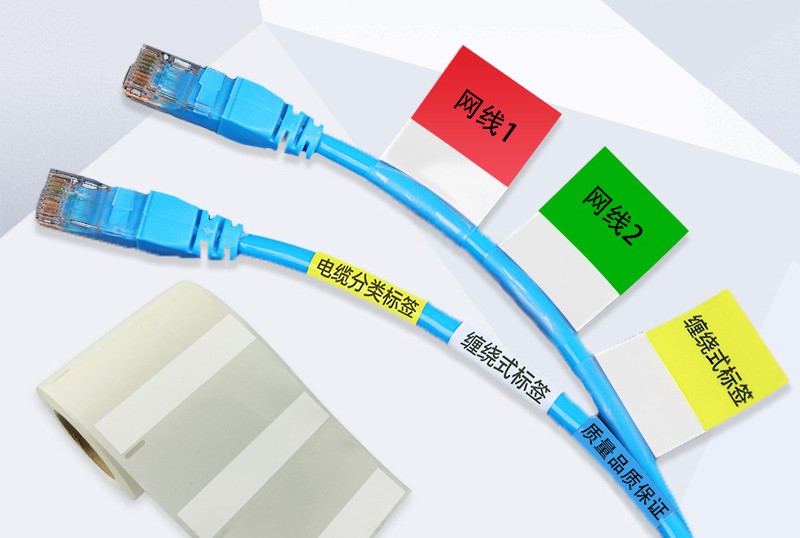Navigating through the myriad of cables in a bustling network environment can be daunting. Effective cable management is not just about organization; it’s about maximizing efficiency and minimizing downtime. A clear, consistent labeling system is essential to achieving this balance.
The best way to label network cables involves using standardized practices, suitable materials, and helpful tools to ensure each cable can be quickly identified and managed. This simplifies maintenance, enhances troubleshooting, and supports network changes.
By understanding and implementing a few key strategies, you can ensure that your network’s cable labeling is both effective and efficient, saving you time and effort in the long run.

Importance of Systematic Labeling
Labeling your network cables might seem like a straightforward task, but its impact on operational efficiency is substantial. In complex networks, where hundreds or even thousands of cables intersect, the importance of having a clear, standardized labeling system cannot be overstressed. Effective labeling reduces the time spent tracing cable routes during troubleshooting and maintenance, which directly decreases downtime and improves service reliability.
In environments like data centers or large offices, systematic labeling becomes crucial. The correct identification of cables can prevent the costly errors that occur when connections are mistakenly altered during system upgrades or routine maintenance. A robust labeling system also ensures that any personnel, regardless of their familiarity with the installation, can easily understand and navigate the network infrastructure.
Choosing the Right Materials and Labels
The durability and readability of your labels are paramount. For network cables, the most commonly used materials include self-laminating vinyl and polyester. Self-laminating vinyl labels are perfect for environments with exposure to moisture or chemicals as they have a protective overlay that safeguards the printed area from wear and tear. Polyester labels are best suited for indoor use where minimal physical wear is expected but where resistance to fading and smearing is still necessary.
The choice of label type often depends on the specific needs of the network. Labels should be resistant to the environmental conditions they will face, whether that’s high humidity, temperature fluctuations, or exposure to chemicals. Additionally, the adhesive quality of the labels must be sufficient to prevent them from peeling off over time, which could lead to misidentification or loss of valuable information.
Labeling Techniques and Best Practices
Effective cable labeling is not just about choosing the right label but also about how and where you apply them. Common techniques include using flag labels, which are easy to read from angles, and wrap-around labels, which encircle the cable for visibility from any direction. It is vital to place labels at both ends of each cable, at panels, and in closets. This ensures that each segment of the network is identifiable at every critical point.
The text on the labels should include essential information like the cable’s origin, destination, and purpose, as well as any unique identifiers. Keeping the text concise and clear under a standardized format across the entire network will help in maintaining consistency.
Utilizing Labeling Tools and Equipment
For larger networks, manual labeling might not be efficient or feasible. In such cases, using professional labeling tools and printers can streamline the process. These devices can quickly produce high-quality, durable labels that are consistent in appearance and adhere to the network’s labeling standards. Automated tools can also integrate labels with network management systems, ensuring that every physical label has a corresponding digital log, which can be invaluable for managing a complex network.
Industrial wire labeling machine is an efficient and accurate labeling machine. It can print labeling in real time. It greatly improves the labeling efficiency and labeling accuracy.

Software Solutions for Cable Management
To further enhance the effectiveness of a cable labeling system, integrating software solutions that allow for the tracking and management of network connections can be beneficial. These systems provide a digital overview of the network’s physical infrastructure, making it easier to update and manage as changes occur. They can also store detailed records of each cable’s history, specifications, and network role, which can be critical during expansions or troubleshooting.
Conclusion
Labeling network cables effectively is a foundational aspect of network management that ensures operational efficiency and reliability. By choosing the right materials, employing suitable labeling techniques, utilizing the proper tools, and integrating supportive software, network administrators can save time, reduce costs, and prevent errors. This systematic approach to cable labeling not only simplifies current network operations but also prepares the infrastructure for future expansions and upgrades.
You may be interested:
- What is cable and wire identification?
- What are the roles of Labelling in cables?
- Why is labeling cables important?
- What are the different types of labeling machines?






